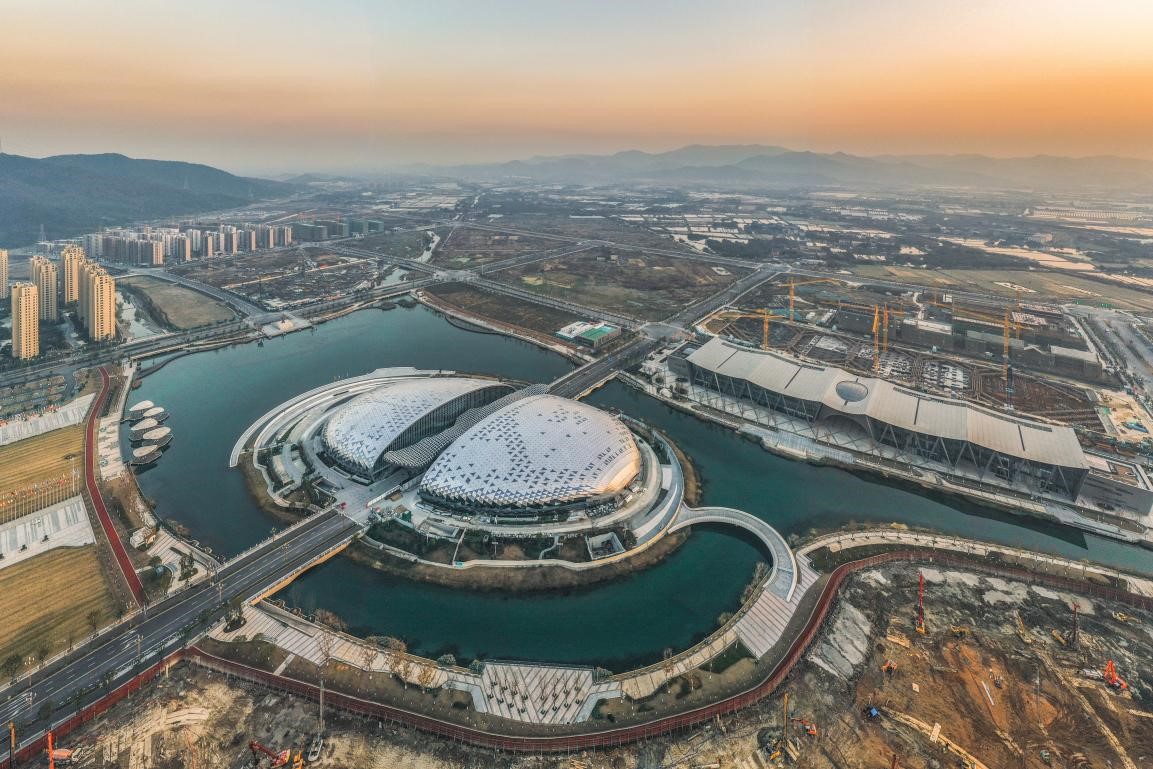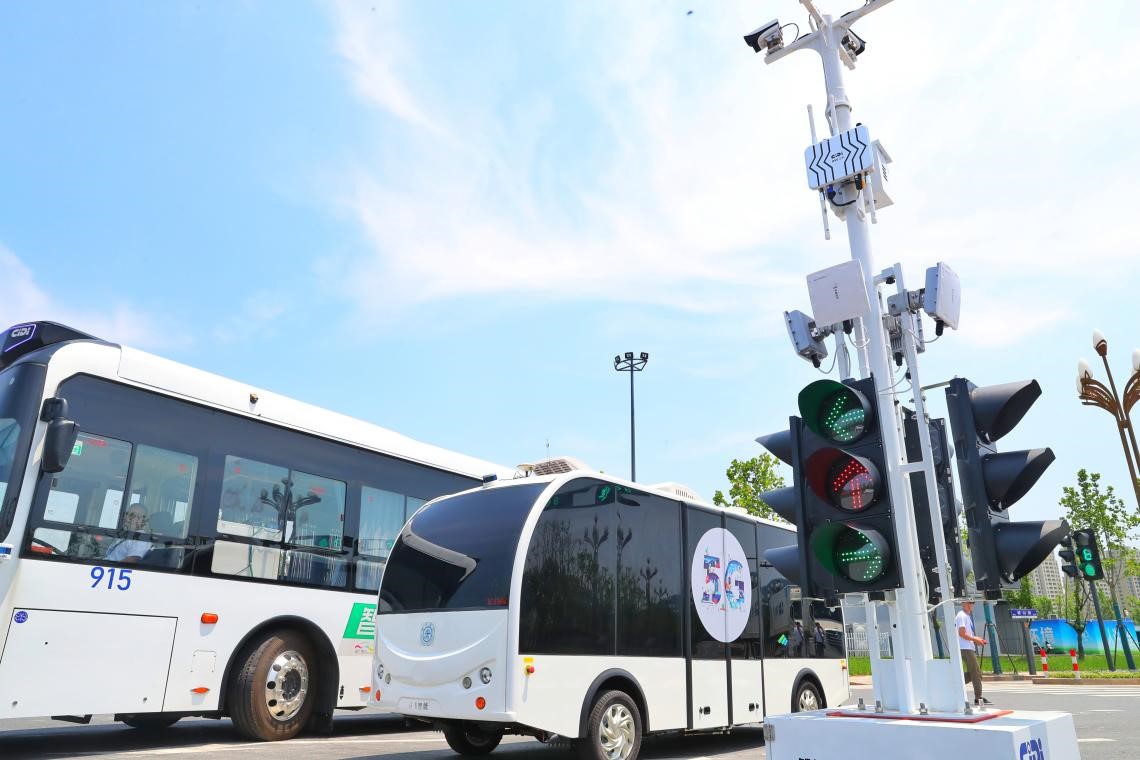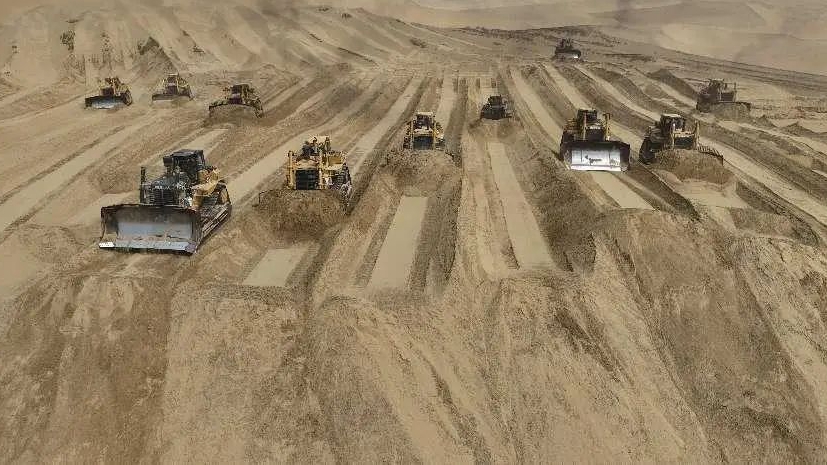China's geospatial industry sees strong growth
From the BeiDou Navigation Satellite System tens of thousands of kilometers above the ground, to the map applications in our mobile phones, the rapid technological development has made China's geospatial industry one of the most powerful engines driving the country's digital economy, by highly integrated with smart city construction, digital government, health governance and smart lifestyles.

A laser radar system developed by CHC Navigation is exhibited at the 2022 Conference of Chinese Geospatial Industry and Sciences held at the Binhu International Convention and Exhibition Center, Hefei, east China's Anhui province, Aug. 11, 2022. (People's Daily Online/Yuan Bing)
With geospatial technologies, one can easily find available parking space on a mobile phone via satellite navigation, browse the information of all the companies in an office building through 3D scene platforms, and manage underground pipelines with advanced devices that can "see through" the ground surface.
Recently, the 2022 Conference of Chinese Geospatial Industry and Sciences was held in Hefei, east China's Anhui province.
As the highest-level, largest-scale and most influential conference of China's geospatial industry, the event was highlighted by a series of technological advances.
At the conference, Chinese drone giant DJI displayed a dock, which makes drone operations completely automated and unattended. CHC Navigation based in Shanghai presented its latest breakthroughs in long-range laser radar, which made China a step closer to the independent development of high-precision long-range laser radars.
Industry-leading spatial-intelligent infrastructure company Qianxun SI also brought a new technology that helps with the impacts of ionospheric variability on unmanned aerial vehicle surveying, high-precision laser radar ranging and other scenarios.

Photo taken on Dec. 22, 2020 shows an international exhibition center in Deqing Geographic Information Town, Huzhou, east China's Zhejiang province. (People's Daily Online/Ding Junhao)
The Chinese geospatial industry has achieved fruitful results in innovation and shown strong resilience.
According to statistics released by the conference, the total output of China's geospatial industry reached 752.4 billion yuan ($105 billion) in 2021, up 9.2 percent year on year. The compound output growth rate of the industry stood at 11.5 percent in the recent five years and 17.5 percent in the past decade.
The constantly expanding industry is driving employment growth. As of the end of 2021, there were over 164,000 entities engaged in the industry, up 18.5 percent from a year ago. Enterprises accounted for 94.7 percent of these entities.
Around 35,800 entities in the industry were newly registered last year, up 29.2 percent year on year. Besides, nearly 4 million people were working in the industry as of the end of 2021, growing 18.5 percent from a year ago.
Deqing county, Huzhou, east China's Zhejiang province has established a 3D model of its territory that precisely presents its landscape. Based on the model, the county launched a series of digital applications to assist its farming, disaster management, pandemic control and other work.

A 5G-enabled autopilot bus carrying passengers runs on a road for automatic driving testing in Deqing Geographic Information Town, Huzhou, east China's Zhejiang province, June 15, 2019. (People's Daily Online/Xie Shangguo)
In Hefei, geospatial technologies are employed for the ecological conservation of the Chaohu Lake, one of the major freshwater lakes in China. The city has set up a digital platform to share data and trace sources of pollution, which is able to perform real-time monitoring of water quality and volume, and algal bloom on the Chaohu Lake.
Encouraging the development of smart city construction, digital twin and geospatial technologies will create new opportunities for China's geospatial industry.
Xu Guanhua, former Minister of Science and Technology of China and academician of the Chinese Academy of Sciences, noted that massive geospatial data have been generated and stored through basic surveying, satellite remote sensing and major engineering projects launched over the past years.
Making good use of such data will be a key priority for future development, and making these data serve the demand of the country will accelerate the industry's development, Xu said.
Photos
Related Stories
- China's BeiDou-compatible smartphone shipments exceed 130 mln in H1
- China’s BeiDou system achieves in-depth integration with various industries
- China’s BeiDou system facilitates economic, social development
- BeiDou fully serving China's socioeconomic development
- BeiDou boosts tech support in Chinese smartphone industry
- China’s BeiDou system provides global users with high-precision positioning, timing services
- China’s BeiDou system enters new stage of continuous and stable services, rapid development
- BeiDou directed seeders work in Xinjiang's cotton fields
- China’s BeiDou Navigation Satellite System embarks on new journey of global, industrial development
- Latest progress in China's BeiDou Navigation Satellite System
Copyright © 2022 People's Daily Online. All Rights Reserved.









